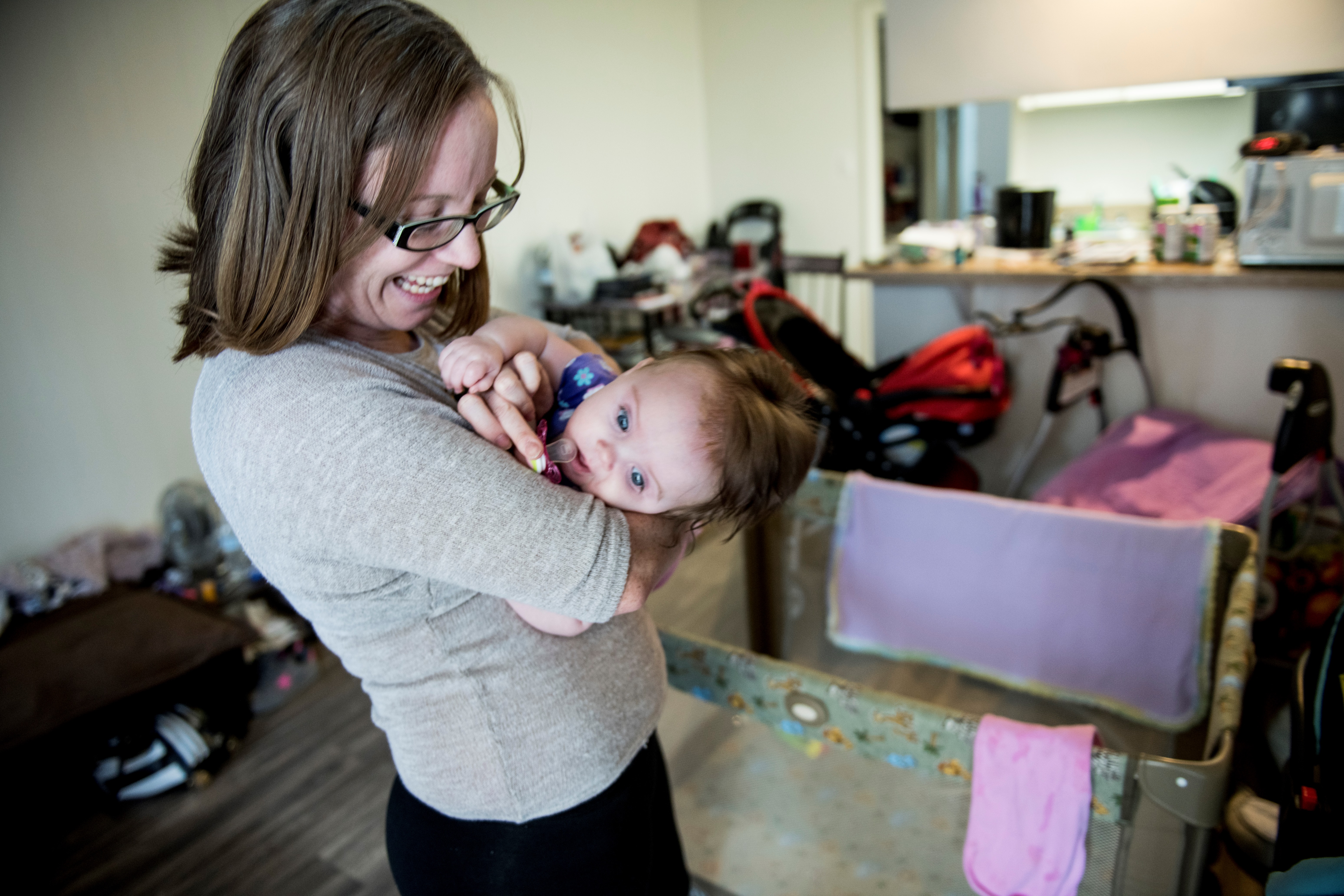
Alicia Spradlin and her daughter Faith are residents of an integrated care housing community, which consists of set-aside apartments for UnitedHealthcare Community Plan members with complex socio-clinical needs. Photo courtesy of UnitedHealthcare
The Champlain Housing Trust purchased the Ho Hum Motel and renovated it into 19 micro apartments. Beacon Apartments serves people coming out of homelessness that have medical vulnerabilities. A case manager works onsite, employed by the Community Health Centers of Burlington. Photo courtesy of Jon Shenton/Champlain Housing Trust
When the University of Vermont Medical Center (UVMC) completed a community health assessment six or seven years ago, its staff learned that the lack of affordable, safe housing was the No. 1 issue in the area. But while the hospital’s leaders acknowledged that finding, they weren’t ready to address it. Providing housing, they felt, wasn’t the hospital’s job or mission.
Since then, the institution’s mindset has radically shifted. UVMC partners with Champlain Housing Trust to run two renovated motels in Burlington, Vermont, which provide homes to formerly homeless and housing-insecure people with high medical needs. And the hospital’s administrators are singing the praises of addressing high medical costs through housing.
Many hospitals and health care organizations around the country have gone through similar transformations. Less than a decade ago, most administrators and researchers would have asserted that housing was housing, and health was health: two distinct fields that overlap only in only superficial ways.
Today, of course, things have changed. There’s a growing realization around the country that of all the social determinants of health, housing is perhaps the most influential. Housing insecurity can create and exacerbate a huge range of illnesses and symptoms. For hospitals and insurers, there can be major cost savings involved in focusing on housing because homeless people or those living in unsafe conditions are often the highest users of hospital services and can cost the system thousands of dollars in hospitalizations and emergency room visits.
Allocating funds to give some of those “frequent flyers” a reliable place to rest has proven consistently beneficial for everyone. And that includes community development organizations, which are often experts at housing development and are able to further their missions by partnering with deeper-pocketed health care groups.
The path there isn’t always smooth, though. For many community development groups, there are steep learning curves, different languages and cultures to be bridged, and technical challenges like data sharing and privacy to be ironed out.
But Champlain Housing Trust has had a relatively easy time—perhaps because UVMC wound up piggybacking on something the organization was already doing. Around 2013, the organization bought a motel and retrofitted it for homeless people, with space for case managers from a range of service providers.
“At the time, the hospital had a backlog of people in its ER, and had been asking the state to pay for a motel. They couldn’t discharge people because they couldn’t discharge them to a tent,” explains Chris Donnelly, the director of community relations at Champlain Housing Trust. Eventually, Champlain Housing Trust offered to set aside a handful of rooms for those homeless patients—with full access to the on-site case managers—and the hospital contributed to the organization’s operating reserve in return. Patients stayed for roughly three weeks until they were fully recovered, then they were discharged. The model wasn’t comprehensive: homeless patients went back to the streets, and others returned to housing that may have been substandard.
After a year or two, the hospital ran the numbers on the 100 patients who had stayed at the motel, comparing the average cost of treating each individual 120 days prior to the intervention to 120 days after the intervention. It turned out that UVMC saved more than $10,000 per person, in-patient costs declined by 81 percent, and readmissions to the ER were way down.
“They saw that and said, ‘If we can save that much just helping people getting over the hump of being ill, what would it look like if we invested in more permanent housing?’” says Donnelly.
The hospital has since partnered with Champlain Housing Trust on the renovation of two more motels that provide on-site services. One, developed in 2016, has 19 small apartments for people with chronic illnesses. The on-site services are paid in part by the medical center, and housing costs are covered by vouchers. The second was finished last year and has eight apartments: five are permanent units for chronically homeless people, and three are temporary “respite” units designed for those recovering from illness who don’t have a safe place to stay. UVMC, which selects patients for the respite units, paid for the property’s purchase and renovation, as well as for case management and operations. The residents of both projects are all UVMC patients: it is, after all, the only hospital in town. The hospital is tracking outcomes, but it’s too early to draw conclusions about cost savings at either project.
“The medical center kind of just got religion about this. They’re . . . really happy with the outcome,” says Donnelly. The relationship has evolved, he says, and has slowly grown into one of trust and collaboration. The groups have advocated together at the state legislature for funding for the nonprofit, and Champlain Housing Trust testified on the hospital’s behalf before a state supervisory board when the hospital wanted to use surplus revenues for housing initiatives. “We work to solve each others’ needs.”
Most importantly, the residents of the three motels have seriously benefited. All are now connected to a primary care physician, and many are finally able to seek regular employment.
Finding the Best Health Care and Housing Partners
Champlain Housing Trust’s experience isn’t necessarily typical, says Sarah Norman, the director of healthy homes and communities at NeighborWorks America. “There are a lot of different partnership models, but health care partners are usually less likely to support actual bricks and sticks,” she explains. More often, they’ll pay for housing stability services or supportive services.
Funding from health care groups tends to come from one of three places: community benefit funds, investment dollars, and accountable care organizations, or health care services. But convincing hospitals and insurers that it’s worth their while to support housing for their frequent users isn’t always easy. Health care is complicated, and “the costs are incurred to multiple parts of the health care system,” says Norman. That is, the hospital may save a bit, but some of the savings may accrue to Medicaid or the criminal justice system—which means it may not be so obvious to the hospital that a big up-front investment will be beneficial.
But each health care group is different, says Megan Sandel, a Boston Medical Center (BMC) pediatrician who’s been focusing on the nexus of health and housing for two decades. “Not every hospital will serve a predominance of patients on Medicaid,” she says. “For some, it’s front and center; for others, it’s not make or break.” The downside for community development organizations is that while nonprofit hospitals that care for the lowest-income people may feel like natural partners, they’re also the ones in the industry who tend to have the least money to give out.
Sandel—who points out that with 5 percent of housing-insecure patients using roughly 50 percent of a hospital’s resources, housing investments make sense—says that hospitals and other health care groups are still figuring out how to target those high users. “Do you have the analytic capacity if a houser sends you their address list—can you turn that into utilization patterns?” she asks. “Among our high-cost, high-need people, are we seeing common address patterns?” That is, can health care organizations take advantage of the data that housing groups are privy to?
“If you knew you had high-cost, high-need patients in a given concentrated area you are more likely to do housing [and] health collaborations there,” says Sandel, citing the Cincinnati Children’s Hospital and its work in an Avondale neighborhood as an example. The area had high levels of asthma hospitalizations and premature births and the hospital worked on housing partnerships with community-based organizations to reduce the incidence of those issues.
That might not make sense for every hospital, but mission-based institutions like BMC might be willing to invest in housing in neighborhoods that are home to many frequent users of health care services, without any guarantee that all of the project’s residents will be the hospital’s patients. And that’s particularly true if the hospital is mandated to fund community health initiatives in return for expansion approval.
“BMC’s housing investments are not tied specifically to our patients, which we did deliberately,” explains David Kibbe, a BMC spokesman. “The objective is to support healthy neighborhoods—and since many of our patients live in those same neighborhoods, we expect the hospital would see those positive outcomes reflected in our patient population as well.”
Navigating Privacy Issues
Data is key to everything a hospital does, which means that if it’s funding a housing development for patients, its administrators will want access to information about their health. And that can raise privacy issues.
Boston’s Codman Square Neighborhood Development Corporation has been grappling with some of those issues. Last December, the organization—thanks in part to Sandel’s advocacy—received $800,000 from BMC over four years to rehabilitate 35 units of permanent, supportive housing. The organization had purchased the property two years earlier from bankruptcy and it came with existing low-income tenants who were considered high medical users.

Walter Putnam lived in a tent for five years before getting connected to the homeless health care program of the Community Health Centers of Burlington. He now lives in a Champlain Housing Trust apartment at Beacon Apartments, a former motel converted by the trust and supported by social workers employed by the health center. Photo by Jon Shenton/Champlain Housing Trust
So far, however, only about one-third of the residents have signed waivers that allow any of their personal information to be shared with BMC and other partners. That means the hospital doesn’t yet know how many of the residents are BMC patients. But getting those waivers will take effort and patience. “It’s not privacy—it’s more that you have to really work hard to develop relationships with [the tenants],” explains Gail Latimore, Codman Square’s executive director. “BMC definitely wants that information, but we still have a way to go.”
Informed consent is key, says Steve Miff, president and CEO of PCCI, which connects heavy users of Dallas’s Parkland Hospital with key services. His organization lives and dies by data, and takes a multi-pronged approach to consent. That means there are several layers to the information the group asks for, as well as several levels of access for employees of PCCI and service providers. “It’s critically important” to carefully structure how data is shared, says Miff, “and it’s the right thing to do.”
But data isn’t the only challenge that Codman Square is facing. The organization had initially hoped to prioritize men of color—one of its target populations—in the building, but that idea raised fair housing alarms. Instead, it will figure out how to provide support for a group of residents with deep needs, which isn’t something the team has done much of. “We’re going to have to learn with our partners; they’re giving us a sense of how best to access and tap into services like housing stabilization and case management,” says Latimore.
The good part is that the funding from BMC has helped Codman Square leverage another $3 million in pre-development capital—and that’s important because the entire development could cost as much as $5 million. “BMC will help us with not only dollars, but also being able to map out a plan for this property from a social services perspective,” says Latimore. “Their money is helping us build those relationships.”
Health Care Groups Taking the Lead
Not infrequently, health care groups drive the partnership. In Minnesota’s Twin Cities, Health Partners, an insurer that also administers hospitals and clinics, approached Common Bond Communities, which runs several low-income properties in St. Paul. The health care group has a clinic nearby and was interested in sending a community health worker to educate residents about their medical options—preventive care, primary care, and after-hours sites—to offset the high rate of ER use and hospitalizations.
Health Partners used ZIP code analysis to identify 230 members of its network who lived in one particular building. The community health worker eventually met with 150 of them in repeated interactions. “[The community health worker] was thought of as part of the community, and Common Bond supported her presence,” says Tom von Sternberg, senior medical director of geriatrics, home care, hospice, and case management for Health Partners. “Our evidence shows that after those interactions over six months, we saw an increase in primary care, a decrease in hospitalization rates and ER usage, and an increase in satisfaction.”
But not everyone who lived in the complex was insured by Health Partners, and this made for a slightly sticky situation since the insurer was only assisting its customers. The company did provide newborn screenings to any family with a newborn in the building, but ultimately, says von Sternberg, “we haven’t solved that yet.”
In New Jersey, the Camden Coalition of Healthcare Providers has also pushed to find housing for frequent hospital users.
“We were enrolling people who were homeless, and realized there was a gap in the system,” says LaTonya Oliver, a clinical manager for the Camden Coalition. “We’d meet them at the hospital, then they’d be discharged. We weren’t able to engage with patients when they were discharged home.”
The result, in 2015, was the coalition’s Housing First initiative, which uses housing vouchers from the state to get those homeless patients immediately into long-term shelter. The group has several partners—Volunteers of America, South Jersey Behavioral Health Resources, and Saint Joseph’s Carpenter Society—that provide wraparound services and help rent out apartments.
“Once they’re housed, other things come up as they’re in a position to be more stable,” explains Victor Murray, the coalition’s director for care management. “We’re still in connection with the patient—we’re still very involved even though we’re not directly providing care.” The coalition has found that Housing First participants’ use of emergency room and inpatient services drops more than 60 percent once they’re housed.
Two Big Hitters Collaborating
In Phoenix, Arizona, the partnership between United Healthcare and Chicanos Por La Causa is perhaps the most well-known example of a successful effort to get heavy health care users into homes. Classic because the players are powerhouses, the funding is major, and the relationship was built gradually upon successful projects.

The Residences at Camelback West is walking distance to The Palms. Together the two apartment communities have 500 units. Photo courtesy of Chicanos Por La Causa
The two groups—one a division of the largest insurer in the U.S., the other the biggest community development group in Arizona—first met around 2012 and collaborated on a community service center. Their partnership on that project grew over the next few years, and the relationship deepened.
In 2016, staff from Chicanos Por La Causa approached the insurer with a much bigger ask than in the past. “We looked at what they were currently investing in and wanted to invest in, and we presented them with an opportunity,” says Pedro Cons, Chicanos Por La Causa’s executive vice president of integrated health services. “We knew that decreasing utilization was a big thing for them, and we think housing is health care, and so we suggested” that United Healthcare lend Chicanos $20 million at a low interest rate.
Instead of being shocked, the insurer said yes, and the amount was later raised to $22 million. The funding was used to acquire and rehabilitate a dilapidated 500-unit building in Phoenix. The strategy was to rent out 80 percent of the units at market rate, and the returns from those apartments would subsidize the other 20 percent, which would be available to low-income residents who were heavy health care users. Those residents would be given supportive services that would connect them to resources and track their progress.
Because United Healthcare completely funded the project, it was able to mandate that all of those residents be clients of the insurer, and it chose them. Had the project utilized public money, that practice would have raised fair housing concerns.
“It’s been working phenomenally,” says Cons. “From an operational business standpoint, the site is doing what it needs to be doing to support the subsidy.” The project is also demonstrating the impact housing has on health care; United Health has seen a drop in emergency room visits among residents in the subsidized units, measured by pre- and post-intervention utilization rates.
It hasn’t been 100 percent smooth sailing, however. “What’s been a challenge is that we speak different languages. We had to learn each other’s languages fairly quickly. Our culture is different too,” says Cons. For example, he said, the insurer tended to move much faster than the nonprofit, and consistently maintained certain business practices. “Every single meeting, they’d have a [written] agenda. And every one of our conversations was done on their [phone] line,” explains Cons. “On the positive side, our financing speaks the same language as their financing.”
Part of United Healthcare’s attraction may have been Chicanos Por La Causa’s track record, says Cons. The organization has been in the real estate business for over 30 years and currently has 3,500 multifamily units in its portfolio, as well as 500,000 square feet of commercial space. It was recently awarded $137 million—one of the largest grants in the country—from the federal Neighborhood Stabilization Program 2 program, and has already deployed another $300 million in NSP funding.
Partnering with an insurer to develop housing works best in an area where the insurance company has a large market share, as United Healthcare does in Arizona. “Here in Arizona, one in every three individuals is insured by them. They have a pretty significant presence—50,000 members in a five-mile radius—so it’s a critical mass,” says Cons.
That may have simplified some elements of the project; not every partnership between a health care institution and a community development group is quite so straightforward. And the practice of collaborating to provide housing for high utilizers of health care services is still new, which means there are lots of uncertainties and issues that remain to be addressed. But just about all of the groups involved in these partnerships say they pay off across the board, and are worth pursuing.

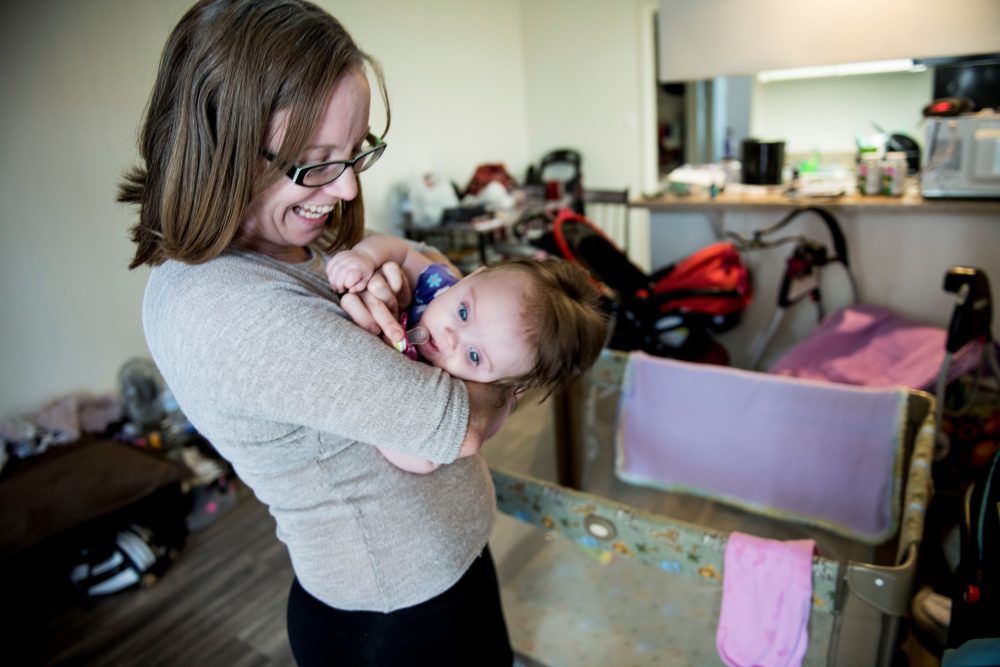

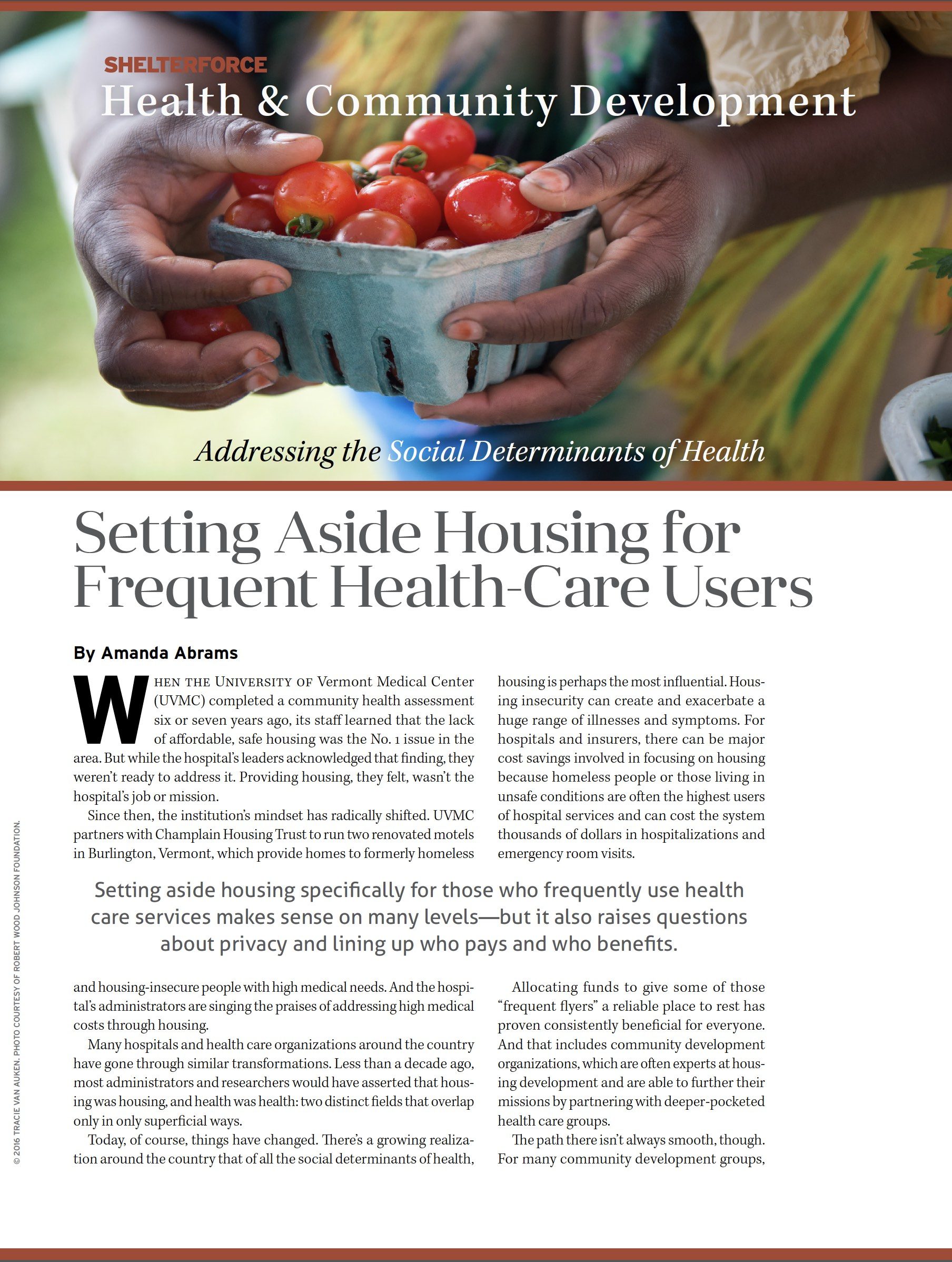
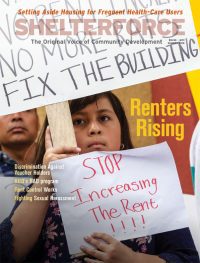
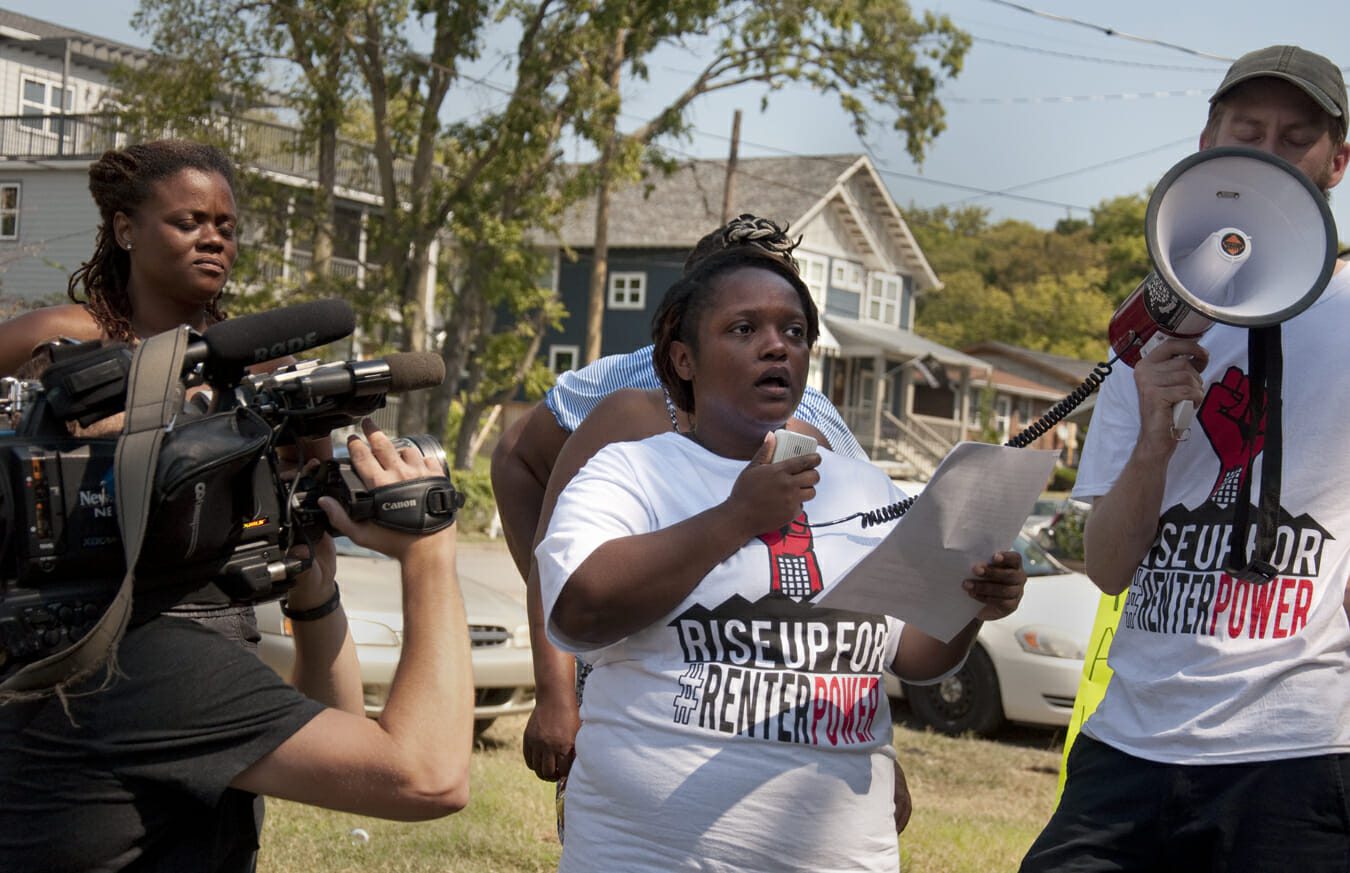
Comments